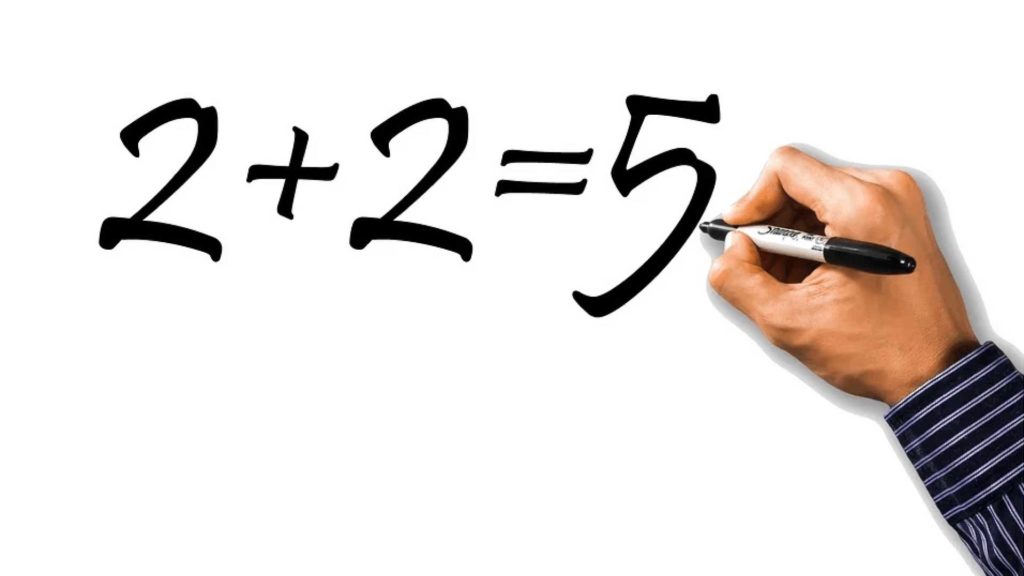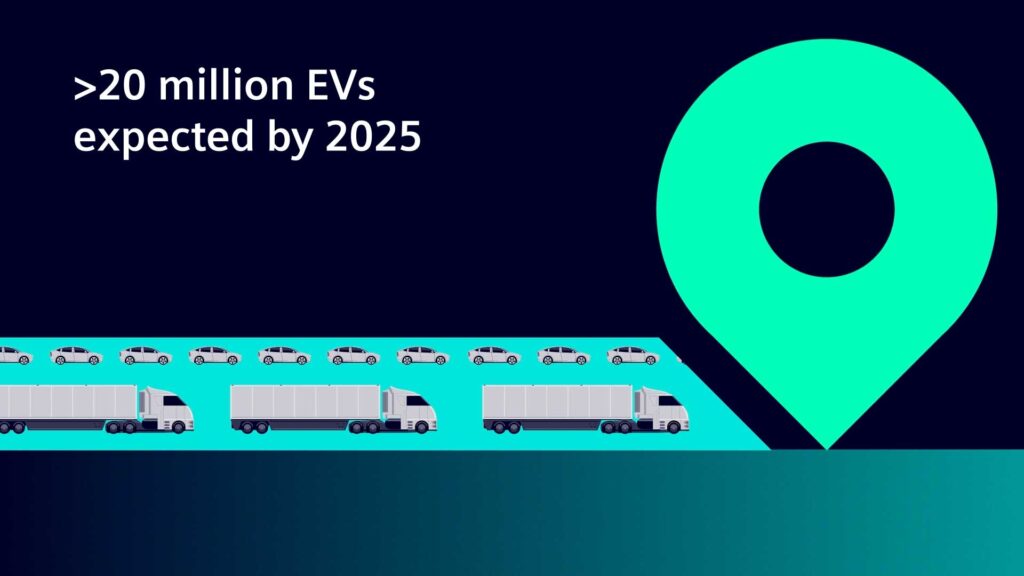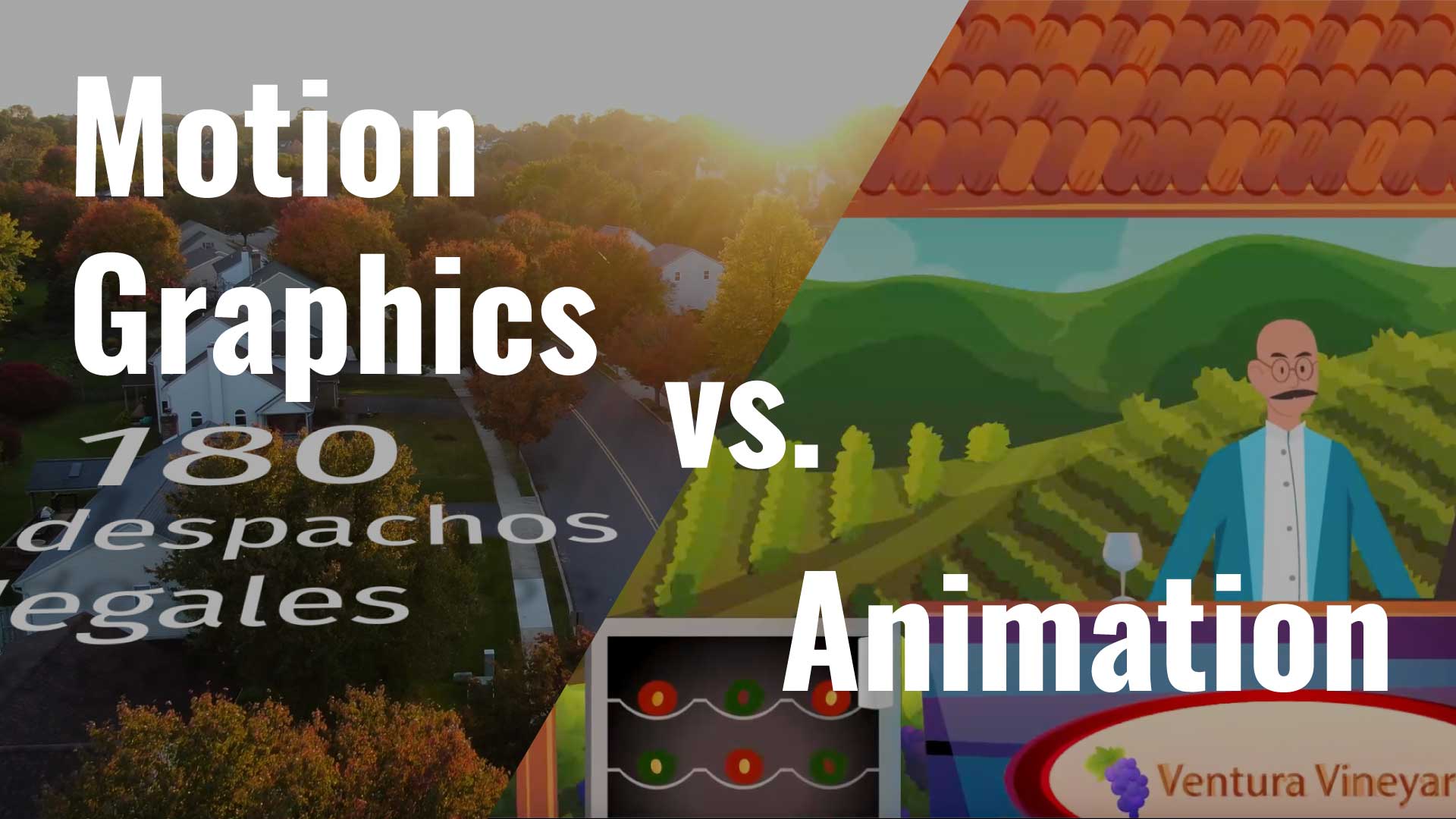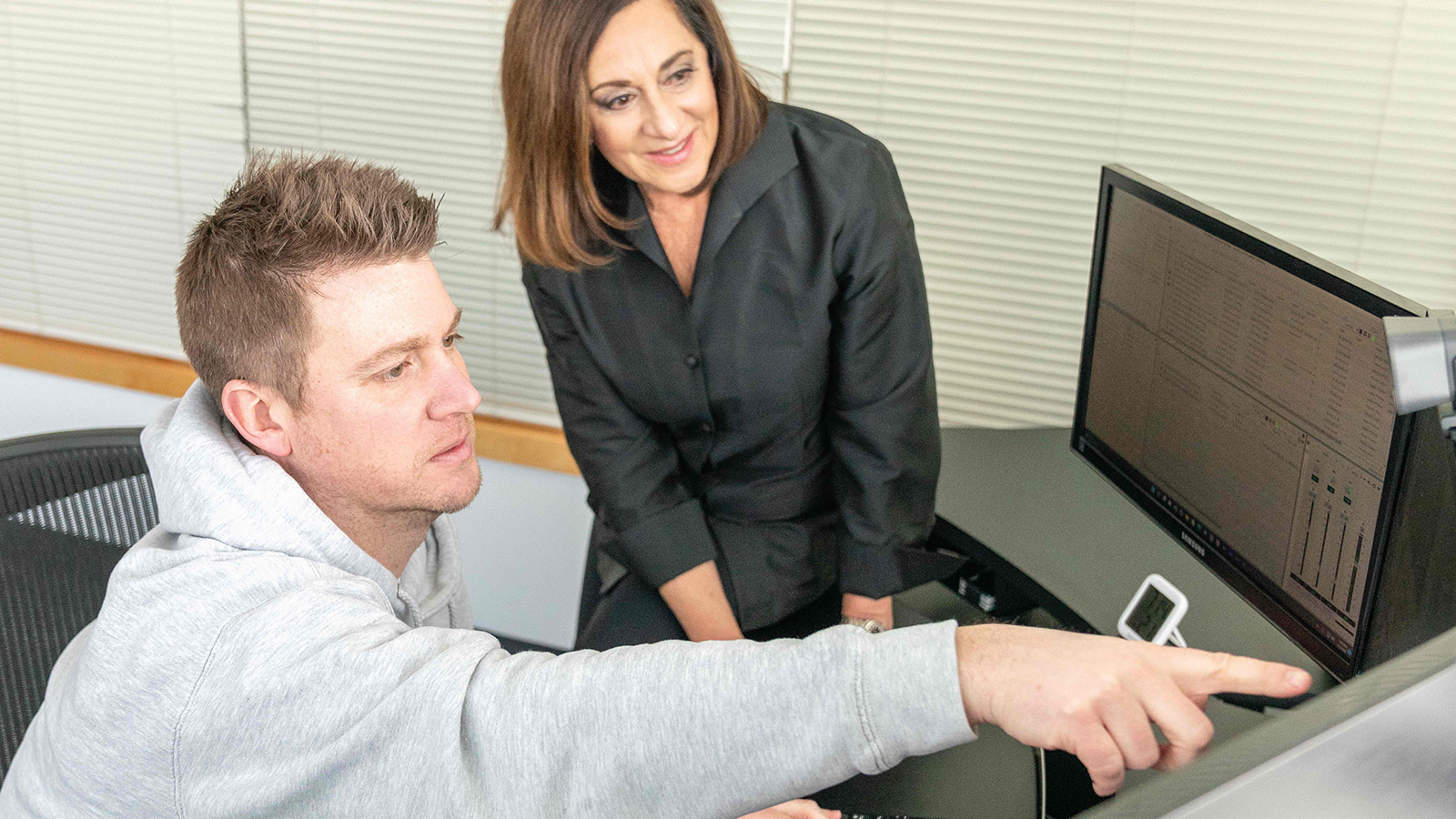
Motion Graphics: What They Are, How To Use Them & What Not To Do
Good motion graphics are an amazing way to spice up video production, but if you don’t create just the right type of script to accompany those “wow” animations, you’re missing the boat. Believe it or not, there really is a “right” type of script. Great motion graphics have a style and pacing, and the script must complement them. Learn more about motion graphics including what they are, how to use them, and mistakes to avoid when creating motion graphics.
What are motion graphics?
Motion graphics are a form of digital animation that combines graphic design, visual effects, and motion to create engaging and dynamic visuals. They are typically used in various multimedia projects, such as videos, films, advertisements, presentations, websites, and more, to convey information, tell a story, or enhance the overall visual appeal.
What are the benefits of motion graphics?
Motion graphics are a versatile and compelling medium that seamlessly blends visual elements, animation, and storytelling to deliver a powerful message. Their ability to captivate audiences, simplify complex ideas, and enhance the overall appeal of various media formats makes them a valuable tool in a multitude of contexts. Here, we delve into the many benefits of using motion graphics.
Engagement is a paramount advantage of motion graphics. Their inherent movement and animation draw viewers’ attention and maintain their interest in the content. Unlike static visuals, motion graphics provide a dynamic and immersive experience that keeps audiences engaged from start to finish.
One of the most significant advantages of motion graphics lies in their capacity to simplify intricate ideas and data. Through animations and graphics, they can transform convoluted concepts into visually intuitive representations, making it easier for viewers to comprehend and retain information. This feature is particularly invaluable in educational materials, data visualization, and instructional content.

Visual appeal is another hallmark of motion graphics. Well-crafted animations can infuse videos, presentations, websites, and other media with an aesthetically pleasing and memorable quality. They elevate the overall design, making content more visually appealing and engaging for the audience.
Motion graphics also amp up your storytelling. They offer an effective means to convey narratives, make complex processes simple and narrate a brand’s story in a succinct and compelling way. Whether used in marketing campaigns, explainer videos, or corporate presentations, motion graphics can convey complex ideas and narratives with clarity and impact.
In terms of branding, motion graphics can reinforce a company’s identity by seamlessly incorporating its logo, colors, and design style into animations. This fosters brand recognition and consistency across different communication channels, bolstering the brand’s presence in the minds of consumers.
Enhanced information retention is yet another benefit of motion graphics. Viewers are more likely to remember information presented through motion graphics compared to static text or images. The combination of engaging visuals and movement creates a more memorable and impactful learning experience.
The versatility of motion graphics is evident in their ability to adapt to various applications, including marketing videos, educational materials, product demonstrations, advertisements, and more. They can seamlessly integrate into different platforms and media, making them a versatile choice for content creators.
Accessibility is a key consideration in today’s diverse world, and motion graphics can play a pivotal role in making content accessible to a wider audience. Visual animations transcend language barriers, catering to those with different learning preferences or language constraints.
Some motion graphics offer interactivity, allowing users to engage with the content, click on elements, or control the narrative flow. This adds an extra layer of engagement and user involvement, making it a valuable tool in interactive learning modules and user-guided experiences.
When used judiciously, motion graphics offer a sense of professionalism and polish to videos and presentations. They elevate the overall quality of the content, lending a sleek and modern aesthetic that resonates with today’s audiences.
Cost-efficiency is a notable advantage of motion graphics. While creating high-quality motion graphics may involve some initial investment, they often prove more cost-effective than producing live-action videos or intricate 3D animations. Their flexibility in terms of revisions and updates further adds to their cost efficiency, as changes can be made without the need for extensive reshooting or re-rendering.
Motion graphics are a multifaceted tool that elevates content across various media formats. They captivate, simplify, beautify, and engage, making them an indispensable asset for modern communication and storytelling. Whether educating, branding, or entertaining, motion graphics offer a compelling and cost-effective solution for engaging audiences and conveying information effectively.
What are the disadvantages of motion graphics?
Motion graphics offer many advantages, but they also present certain disadvantages and challenges that demand consideration in any project involving their use. Here, we delve into these potential drawbacks, shedding light on their impact and how to navigate them effectively.
First and foremost, the production of high-quality motion graphics can be a time-consuming endeavor. The intricate process of designing, animating, and rendering complex animations demands significant resources, so careful planning and resource allocation become pivotal in managing this challenge.
Motion graphics are also complex. Depending on the intricacy of the animation, creating motion graphics can be a big task that requires a skilled team of designers and animators. Complex animations may also pose technical challenges during the production phase, requiring meticulous problem-solving and expertise.
There’s also a fine line between effective use of motion graphics and overwhelming or distracting the audience. Poorly executed motion graphics with an excessive number of animations, effects, or transitions can obscure the core message, and make the content confusing or visually cluttered. Striking the right balance between engagement and clarity is key here.
Accessibility is a vital concern when employing motion graphics. Ensuring that these graphics are accessible to all audiences, including individuals with disabilities, can be challenging. The provision of alternatives such as captions or transcripts for spoken content is not only essential for accessibility but also adds an extra layer of production work.
Consideration must also be given to file size and loading time. Motion graphics often result in large file sizes, potentially slowing down website loading times and increasing bandwidth usage. The technical challenge lies in optimizing motion graphics for web use without compromising quality or user experience.
Misinterpretation is a risk if motion graphics are not executed with clarity. The visual nature of motion graphics can leave room for ambiguity, potentially leading to unintended interpretations of the intended message. Maintaining absolute clarity in animations is paramount to mitigate this risk.
Motion graphics are also subject to design trends and aesthetics, which can evolve over time. Overly trendy animations may become outdated quickly, necessitating frequent updates to stay relevant and visually appealing. Striking a balance between current aesthetics and long-term relevance is an ongoing challenge.
Finally, it’s important to acknowledge that while motion graphics can be engaging, they may not always capture and hold viewers’ attention as effectively as other forms of content, such as live-action video or interactive experiences. This consideration becomes crucial when deciding the most suitable medium for a particular message or audience.
To address these disadvantages, meticulous planning and execution of motion graphics projects are critical. Emphasis should be placed on accessibility and compatibility to ensure that the content reaches the widest possible audience. Above all, clear and effective storytelling should be the guiding principle in the creation of motion graphics. Understanding the limitations and trade-offs associated with motion graphics allows for informed decision-making, enabling their effective use in various projects.

Why are motion graphics great for brands?
Motion graphics provide brands with a versatile and impactful tool for conveying their message, building brand recognition, and connecting with their audience. When used strategically and creatively, motion graphics can enhance a brand’s marketing efforts and contribute to its overall success. Motion graphics can be highly effective for branding purposes for several reasons:
Visual Impact. Motion graphics are inherently attention-grabbing due to their dynamic and animated nature. They can quickly capture viewers’ attention and leave a lasting impression, making them a powerful tool for brand recognition.
Consistency. Motion graphics allow brands to maintain a consistent look and feel across various media channels. Brand colors, logos, and visual elements can be incorporated seamlessly into animations, reinforcing brand identity.
Storytelling. Brands can use motion graphics to tell their story or convey their message in a visually engaging and memorable way. They can create narratives that resonate with their target audience and build an emotional connection.
Versatility. Motion graphics are versatile and can be used across a wide range of platforms and media, including TV commercials, online videos, social media, websites, presentations, and more. This flexibility ensures that the brand’s message reaches a diverse audience.
Simplicity and Clarity. Motion graphics can simplify complex ideas or concepts, making them easier for the audience to understand. They can distill information into visually digestible chunks, which is particularly useful when explaining products or services.
Engagement. Brands can use motion graphics to engage their audience in interactive and entertaining ways. Interactive elements within motion graphics can encourage user participation and generate buzz.
Memorability. The combination of visuals and movement in motion graphics increases the likelihood that viewers will remember the brand and its message. This can lead to better brand recall and customer retention.
Shareability. Compelling motion graphics are more likely to be shared on social media and other platforms. When viewers find motion graphics interesting or entertaining, they are more inclined to share them, amplifying the brand’s reach.
Cost-Effective. Compared to live-action videos or complex 3D animations, motion graphics can often be more cost-effective to produce while still delivering a high-quality and professional appearance.
Accessibility. Motion graphics can transcend language barriers, making them accessible to a global audience. Visual storytelling can convey meaning universally.
Adaptability. Brands can easily update and adapt their motion graphics to reflect changing messaging, promotions, or product features without the need for extensive reshooting or redesigning.
Brand Differentiation. In a crowded marketplace, motion graphics can help a brand stand out by creating a unique and memorable visual identity. This differentiation can be a key factor in attracting and retaining customers.
What are examples of motion graphics?
Motion graphics can be found in a wide range of media and applications. Here are some common examples where motion graphics are used:
Infographics. Motion graphics can bring static infographics to life by adding animations and transitions, making data more engaging and easier to understand.
Advertising. Motion graphics are commonly used in television commercials, online advertisements, and digital signage. Animated logos, product demonstrations, and promotional videos often incorporate motion graphics.
Explainer Videos. Companies use motion graphics to create explainer videos that simplify complex topics or introduce new products and services. These videos often feature animated characters or infographics.
Educational Videos. Educational content, including online courses and tutorials, often employs motion graphics to make learning more engaging and informative. They can help explain concepts, processes, and historical events.
Web Design. Websites sometimes use motion graphics for interactive elements, such as animated buttons, navigation menus, or background animations, to enhance user experience.
Presentations. In business presentations, motion graphics can help capture the audience’s attention and convey key messages. They can be used for slide transitions, data visualization, and illustrating ideas.
Television and Film. Motion graphics are frequently used in television shows and movies for opening credits, transitions, and special effects. For instance, the iconic opening sequence of the James Bond films features motion graphics.
Video Games. Many video games incorporate motion graphics for user interfaces, HUDs (Heads-Up Displays), and in-game animations. These elements enhance the gaming experience and provide important information to players.
Social Media Content. Short, attention-grabbing motion graphics are often used on social media platforms to promote products, services, events, or to tell short stories or share interesting facts.
Virtual Reality (VR) and Augmented Reality (AR). In VR and AR applications, motion graphics can provide interactive elements, 3D animations, and immersive experiences.
Medical and Scientific Visualizations. Motion graphics are used in medical and scientific contexts to illustrate complex biological processes, medical procedures, and scientific concepts.
Government and Public Service Announcements. Government agencies and nonprofits use motion graphics to create public service announcements on various topics, such as health, safety, and the environment.
Music Videos. Music videos often feature motion graphics to enhance the visual storytelling and create unique visual effects.
Product Demos. Companies use motion graphics to showcase their products’ features and benefits in a dynamic and engaging way.
Event Promotions. Event organizers use motion graphics in promotional materials, including videos, posters, and banners, to generate interest and excitement.
These examples demonstrate how we likely see motion graphics daily as they are all versatile and used in different industries and media. They can be tailored to specific needs and creative goals, making them a valuable tool for communication and storytelling.
How do you make a motion graphic script?
Creating a motion graphic script is an essential step in the production process as it provides a clear roadmap for the visual and narrative elements of your animation. Here are steps to help you create an effective motion graphic script:
Define Your Purpose and Audience. Start by clearly understanding the purpose of your motion graphic piece. What message are you trying to convey, and who is your target audience?
Outline the Key Message(s). Identify the main points or messages you want to communicate in your motion graphic video. Keep these concise and focused.
Storyboard Your Ideas. Create a rough visual storyboard or sketch that outlines the key scenes, transitions, and visual elements you intend to use. This can be a simple drawing or description of each scene.
Write an Opening Hook. Begin your script with a compelling opening that grabs the viewer’s attention and sets the tone for the animation. This can be a question, a surprising fact, or an engaging visual.
Break Down the Content. Divide your script into sections or scenes. Each section should address a specific point or idea. Use clear headings or labels to indicate transitions.
Write Concise and Engaging Copy. Craft concise and engaging copy for each section of your script. Keep sentences and phrases short, and use simple language. Avoid jargon or complex terminology unless your audience is familiar with it.
Incorporate a Call to Action (CTA). If your motion graphic video has a specific purpose, such as encouraging viewers to take a certain action, include a clear and compelling call to action at the end. For example, “Visit our website today” or “Subscribe now for more updates.”
Consider Timing. Estimate the duration of each section or scene in your motion graphic. This will help you determine the overall length of the animation and ensure that it doesn’t feel rushed or too lengthy.
Include Visual Instructions. Describe the visual elements, animations, and transitions that correspond to each section of the script. Be specific about what the viewer should see on the screen.
Incorporate Narration or Voiceover (If Applicable). If your motion graphic includes narration or voiceover, include the spoken dialogue in the script. Indicate where the narration should occur and synchronize it with the visuals.
Review and Revise. After drafting the script, review it for clarity, coherence, and alignment with your goals. Revise as needed to ensure a smooth flow of information.
Test with Others. Share the script with colleagues, peers, or team members for feedback. Their input can help you refine the script and identify any areas that may need improvement.
Finalize the Script. Once you’ve incorporated feedback and made necessary revisions, finalize the script. Ensure that it is well-organized, easy to follow, and ready for production.
Collaborate with Designers and Animators. Work closely with your design and animation team to ensure that the script’s vision aligns with the visual elements and animations. Collaborate to make any necessary adjustments.
At CK and CO, we love writing for motion graphics projects because, in so many ways, there are fewer constraints. With the proper use of good motion graphics, you don’t need to worry about having enough video, or video that matches the script. You can design a complete project and execute it. All you need to do is get creative.
What should you not do with motion graphics?
While motion graphics can be a powerful and engaging tool for visual communication, there are several common mistakes and pitfalls that should be avoided when creating them. Here are some common mistakes when using motion graphics:
Using Formal Language. This is a mistake that applies to all types of video, but especially to motion graphic videos. Video scripts are designed to be heard, not read. Using copy created for print can sound stilted and clunky.
A motion graphic tip to avoid this mistake: To combat this, our motion graphic tip is to think about how you speak. Most of us don’t speak in complete sentences. We speak conversationally. That’s what you need to achieve with your script. Additionally, motion graphics lend themselves to a lighter, sometimes humorous tone. Take advantage of it, if appropriate, when you script.
Using Too Many Words. Avoid cramming too much information into a single-motion graphic. Overloading viewers with text or visuals can be overwhelming and counterproductive.
For example, if you are talking about ten different services you provide, you don’t need to say every one of them. The visual is there. Simply say something like, “No matter what type of service you need, we’ll be there.”
A motion graphic tip to avoid this mistake: When it comes to words, less is more. Good motion graphics tell a visual story. The script should support the story, but you don’t need to say it all. The combination of visuals and narrative is powerful. If you load the script with too much content, you slow the pace of the video.
Fail to Think Visually. If you don’t think visually, you may write too much or too little. Doing so can cause the video to be ineffective by not providing your audience with the information they need or overdoing it and making the video hard to follow.
A motion graphic tip to avoid this mistake: Whenever we script motion graphics for advertising, video case studies, social media shorts, or other projects, we think about the visuals we’ll use. If you have initial ideas for visuals, you can work with your graphic designer to expand them. This makes it easier to execute the project and provides a tighter connection between the narrative and the motion graphics.
Overuse of Effects. Using too many visual effects, transitions, or animations can distract from the core message and become visually overwhelming. Too many effects can make it difficult for the most important points to stand out.
A motion graphic tip to avoid this mistake: Use effects judiciously and purposefully to enhance rather than detract from the content. Determine what is most important to remember and highlight it first then add additional enhancements.
Ignoring Brand Consistency. Creating visuals, but neglecting brand colors, logos, and style can weaken the impact of the animation.
A motion graphic tip to avoid this mistake: If you’re creating motion graphics for branding purposes, ensure consistency with your brand’s visual identity. Using your brand colors can go a long way in a viewer remembering your brand.
Lack of Accessibility. Ensure that your motion graphics are accessible to a wide audience. You do not want to miss out on audience members due to inaccessibility.
A motion graphic tip to avoid this mistake: Provide captions or subtitles for videos with spoken content and consider how the animations might be perceived by individuals with visual or hearing impairments.
Complexity without Clarity. While it’s tempting to create intricate and visually stunning motion graphics, avoid complexity that sacrifices clarity.
A motion graphic tip to avoid this mistake: Viewers should be able to easily understand the content and message without confusion. Make sure you aren’t overusing effects or using too many words in your motion graphics, so it is easy to understand.
Are motion graphics and animation the same?
In short, motion graphics and animation are not the same. They both involve the use of moving images, but motion graphics and animation differ in several ways.
Purpose
Motion graphics primarily aim to convey information, tell a story, or present data in a visually engaging and dynamic way. They often involve the use of text, icons, and graphics to simplify complex concepts or enhance communication.
Animation is a broader term that encompasses various forms of moving images, including storytelling, character effects and more. It can be used for entertainment, education, and artistic expression.
Content
Motion graphics often rely on static elements (text, graphics, charts, etc.) that are animated to create motion. They may not necessarily involve characters or elaborate narratives.
Animation can involve the creation of characters, scenes, and entire worlds. It can be used to tell intricate stories and often includes character development, dialogue, and plot arcs.
Complexity
Motion graphics tend to be simpler and less time-consuming to create compared to full-scale animations. They are often used for shorter, concise pieces of content.
Animation can range from simple and short animations (e.g., a bouncing ball) to highly complex and feature-length productions (e.g., animated movies). It often requires more time, resources, and expertise.
Style
Motion graphics often have a sleek, modern, and corporate aesthetic. They frequently use typography and minimalist design.
Animation can have diverse styles, ranging from 2D hand-drawn animation to 3D computer-generated animation, stop-motion animation, and more. The style can vary widely based on the intended audience and artistic vision.
Cynthia Kay founded Cynthia Kay and Company media production 35 years ago. The company produces communications for organizations from Fortune Global 100 to small businesses. A graduate of Michigan State University, Kay holds a master’s in communications from Western Michigan University.
She is the Past Board Chair of the Small Business Association of Michigan (SBAM) and the National Small Business Association (NSBA). Cynthia has been honored with many awards including numerous Tellys and Woman Owned Small Business Supplier of the Year from Siemens in 2018. She has been named One of West Michigan’s 50 Most Influential Women 5 times. She is also the recipient of over 30 broadcast awards from UPI, AP and other news organizations.



